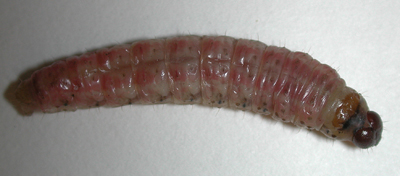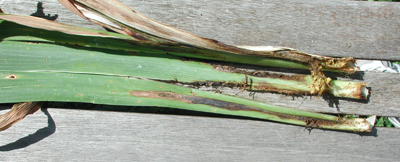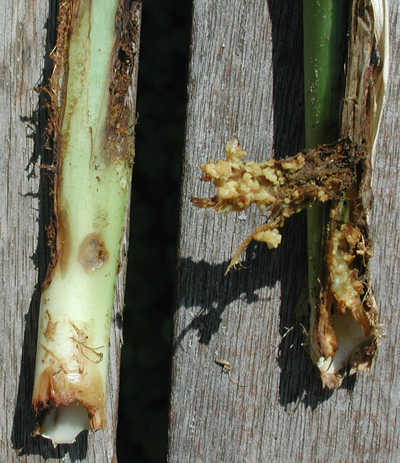Iris borer
July 6, 2015
Boring pests
Iris borer larvae initially feed at the tops of plants, chewing holes in leaves and giving leaves a ragged appearance.

The mature larvae of iris borer are 2 to 5 cm long, fleshy, smooth and pink with black spots on the side.
 They eventually create dark-streaked areas that appear watery. Larvae migrate down the plant, and then mature larvae bore into leaves a few inches above the growing medium surface. Mature larvae then feed within the rhizome, creating large tunnels. The tunneling causes plants to wilt severely and eventually rot.
They eventually create dark-streaked areas that appear watery. Larvae migrate down the plant, and then mature larvae bore into leaves a few inches above the growing medium surface. Mature larvae then feed within the rhizome, creating large tunnels. The tunneling causes plants to wilt severely and eventually rot.
The adult iris borer is a nocturnal moth with dark purple front wings and yellow-brown hind wings. Females lay eggs in plant debris. Iris borer overwinters in the egg stage.
 Management
Management
Remove debris from adjacent areas. Clip and remove dead iris leaves and stems to eliminate any overwintering eggs. Contact insecticides need to be applied before the larvae enter leaves. Frequent applications may be necessary in the spring.
Print a PDF of this page: Iris borer



 Print
Print Email
Email



